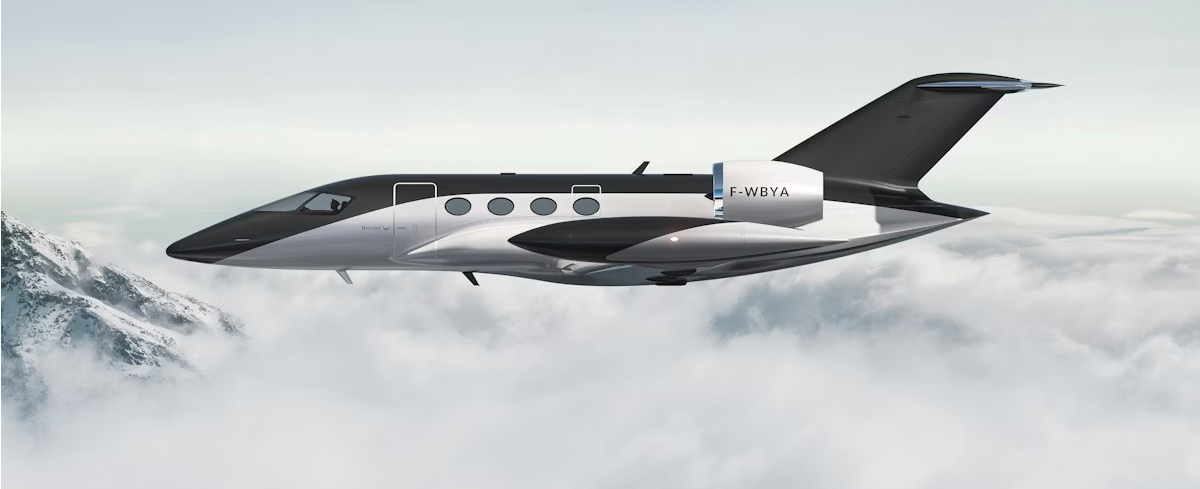While offering unparalleled convenience and luxury, the private jet charter industry presents clients with complex challenges impacting operational efficiency, safety, and financial planning. These problems can range from minor inconveniences to significant disruptions that impact travel plans and budgets. As demand for on-demand air travel grows, understanding these systemic issues becomes essential for frequent flyers and first-time users.
Broker vs. Operator Ambiguity: A Critical Issue for Charter Clients
One of the most significant challenges private jet charter clients face is the confusion surrounding the roles and responsibilities of charter brokers versus Part 135 operators. This ambiguity can lead to serious accountability issues and potential safety risks. Some unethical brokers deliberately blur the lines between being intermediaries and actual aircraft operators, using possessive terminology like "our fleet" or "our pilots" in marketing materials. This deceptive practice creates a false perception of vertical integration, misleading clients into believing they're contracting directly with an aircraft operator when, in reality, they're dealing with a middleman.
The consequences of this confusion can be severe, ranging from safety concerns to accountability issues and financial risks. Part 135 operators are subject to rigorous FAA oversight and safety standards, while brokers masquerading as operators may not adhere to these strict regulations, potentially compromising passenger safety. When problems arise, clients may struggle to determine who is ultimately responsible - the broker or the actual operator. Moreover, in the event of an incident, insurance companies may deny claims if they determine the flight was conducted as an illegal commercial operation.
Qualification Disparities: Expertise levels vary dramatically, and charter brokers do not have universal certification requirements. An estimated 40% of brokers lack formal aviation training, leading to inappropriate aircraft recommendations that ignore critical factors like runway length requirements, baggage capacity, and international clearance capabilities. This knowledge gap frequently results in clients booking jets that cannot legally complete their intended routes or accommodate their logistical needs.
Phantom Bidding Practices: A pervasive issue in private aviation involves unethical brokers advertising unrealistically low rates through a tactic known as phantom aircraft bidding. These brokers attract clients with below-market quotes, only to cancel bookings under fabricated pretenses, typically citing mechanical issues or sudden aircraft unavailability as the departure date approaches. This practice disrupts travel plans and exposes clients to last-minute price surges when scrambling for replacement flights.
Dynamic Pricing Structures
Charter pricing in private aviation differs significantly from commercial aviation's fixed fare model, incorporating a range of volatile variables that can substantially impact the final cost. These variables include regional fuel cost fluctuations, ranging from $4.50 to $12 per gallon, variations in landing fees at different airports, crew overtime costs for delayed flights, and seasonal expenses such as de-icing fluid in winter.
These factors lead to cost deviations of 18-22% from initial estimates in 41% of bookings, making accurate budget forecasting a significant challenge for charter clients. While jet card programs attempt to mitigate this unpredictability through pre-paid hour blocks, they are inadequate, with 29% of users still reporting unexpected surcharges for peak-day travel or international clearances.
This pricing volatility underscores the importance of thorough planning and clear communication between charter providers and clients to manage expectations and avoid financial surprises.
Hidden Fee Prevalence
A 2024 industry audit unveiled a concerning trend in charter pricing transparency. It revealed that 63% of charter quotes fail to disclose at least three potential surcharges. These hidden costs typically include international handling fees ranging from $850 to $2,300, crew overnight accommodation expenses, and charges for auxiliary power unit (APU) usage during ground operations.
The combined effect of these obscured fees is significant, contributing to an average 17% price overrun compared to the original quotes provided to clients. This lack of transparency complicates budget planning for charter customers. It erodes trust in the industry, highlighting the need for more comprehensive and upfront pricing disclosures from charter operators and brokers.
Backup Aircraft Logistics
Premium charter providers maintain backup aircraft positioned within two hours of major hubs, but only 34% of operators guarantee such contingency plans. During peak travel periods, sourcing replacement aircraft proves particularly challenging, with success rates dropping below 60% for last-minute requests during holiday seasons. Clients using cost-driven charter programs often face steep price differentials when accepting backup jets—a $12,000 original booking might escalate to $14,500 for a replacement aircraft.
Documentation Requirements
International charters require the submission of passenger manifests (APIS data) 12-72 hours before departure, eliminating the "last-minute" flexibility many clients expect—failure to comply results in 93% of flight delays for international trips.
Crew Scheduling Complexities
The intricate web of FAA Part 117 regulations governing pilot duty periods presents significant challenges for charter operations. These rules impose strict limits on pilot workdays, ranging from 9 to 14 hours of total duty time, contingent upon the start time, with a maximum of 8 hours of actual flight time permitted within any duty period.
Such stringent requirements have far-reaching implications. They affect nearly three in ten same-day return trips and often necessitate crew changes or unplanned overnight stays.
Ground Coordination Failures
Despite the substantial $15 billion value of the ancillary ground handling services market, it remains a significant source of frustration for private jet charter clients, accounting for 31% of all complaints. The most common issues stem from miscommunication between Fixed-Base Operators (FBOs) and limousine services, leading to transportation delays and confusion.
Catering services also present challenges, with delivery delays averaging 47 minutes, potentially disrupting tight flight schedules. At non-hub airports, inadequate luggage handling further compounds these ground-based problems.
Forward-thinking operators have begun implementing AI-driven logistics platforms to address these coordination failures. These advanced systems facilitate real-time vendor coordination, resulting in a remarkable 62% reduction in ground service failures and significantly enhancing the overall charter experience.
Mechanical Reliability Concerns
Despite stringent maintenance protocols, business aircraft experience mechanical failures at a rate of 1 per 5-6 flights, according to industry analytics. Common issues include:
- Avionic system malfunctions affecting navigation
- Hydraulic failures in landing gear assemblies
- Cabin pressurization irregularities
- Auxiliary power unit (APU) outages
While 78% of these incidents are resolved within two hours through on-site repairs, 22% require depot maintenance, grounding aircraft for 24-72 hours, and necessitating backup solutions. The chart below illustrates typical resolution timelines:
| Mechanical Issue Type | Avg. Resolution Time | Flight Impact Probability |
|---|---|---|
| Avionic Calibration | 1.8 hours | 15% |
| Hydraulic Failure | 6.2 hours | 42% |
| Engine Anomaly | 12.1 hours | 89% |
Supply Chain-Induced Maintenance Delays
Aircraft-on-ground (AOG) incidents due to parts shortages increased 142% between 2021 and 2024, with average resolution times stretching to 11.3 days for widebody charters. Even routine components like brake assemblies now face 6-8 week backorders—triple pre-pandemic levels.
Safety Certification Variability
While FAA Part 135 certification sets baseline standards, third-party audits like ARGUS Gold (56% of operators) and Wyvern (38%) provide enhanced safety benchmarking. However, 22% of charter operators bypass these voluntary certifications, creating substantial risk differentials. Accident rate analyses show:
- 4.7 incidents per 100,000 flight hours (non-certified operators)
- 1.2 incidents per 100,000 flight hours (ARGUS/Wyvern certified)
Weather-Related Disruptions
While private jets can adjust flight paths flexibly more flexibly than commercial airlines, they remain subject to the same airspace flow constraints during significant weather events. Thunderstorm avoidance adds 23 minutes to average flight times during summer, while winter de-icing procedures create 35-minute average departure delays.
Mitigating Charter Risks: Strategic Approaches
Navigating the complex landscape of business aircraft charter requires implementing robust risk mitigation strategies that begin with comprehensive provider vetting. Seasoned charter clients should insist on operators who maintain recognized third-party safety certifications such as ARGUS, Wyvern, or IS-BAO, as these independent validations provide critical verification of safety standards beyond essential FAA compliance.
Equally important is the transparency of aircraft ownership documentation, eliminating potential regulatory ambiguities and ensuring clients understand precisely which entity maintains operational control of their aircraft. Always ask for a copy of the operator's FAA-issued Part 135 air carrier certificate, verify the operator's credentials through FAA databases, and be wary of brokers reluctant to disclose the actual aircraft operator's information. It's critical to understand that reputable brokers should identify as intermediaries, not aircraft operators.
Hidden fees pose a significant challenge for business aircraft charter clients. To mitigate these hidden costs, charter clients should request detailed, itemized quotes from operators, discuss fuel surcharges and other variable fees upfront, inquire about specific airport fees for each leg of the journey, and consider membership programs for more predictable pricing if flying frequently. By maintaining vigilance and asking pertinent questions, charter clients can better navigate the complex landscape of private aviation pricing and avoid unexpected financial surprises.
The contractual framework of charter agreements is crucial in mitigating financial and operational risks associated with mechanical failures and replacement aircraft. Savvy charter clients negotiate specific clauses that address cost absorption for mechanical issues, clearly defining financial responsibility for disruptions beyond passenger control. These agreements typically include:
-
Clear delineation of financial responsibility for mechanical failures
-
Predefined cost caps for replacement aircraft
-
Explicit parameters for sourcing and deploying backup options
Weather delay compensation structures should be explicitly defined, outlining remedies when meteorological conditions impact scheduled operations.
Crew change penalty waivers represent another valuable contractual safeguard, protecting clients from additional costs when FAA duty-time limitations necessitate personnel adjustments.
These contractual elements are increasingly being incorporated into sophisticated digital frameworks, with advanced operators now offering blockchain-based smart contracts that automatically execute contingency protocols when flight parameters deviate from agreed terms. This technological evolution in charter agreements provides unprecedented transparency and accountability, reducing disputes through immutable transaction records and predefined remediation pathways that activate without manual intervention when operational disruptions occur.
By being vigilant and asking the right questions, charter clients can navigate this complex landscape and ensure they work with legitimate, safety-focused operators for their private aviation needs.




